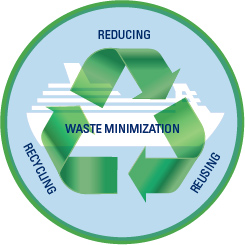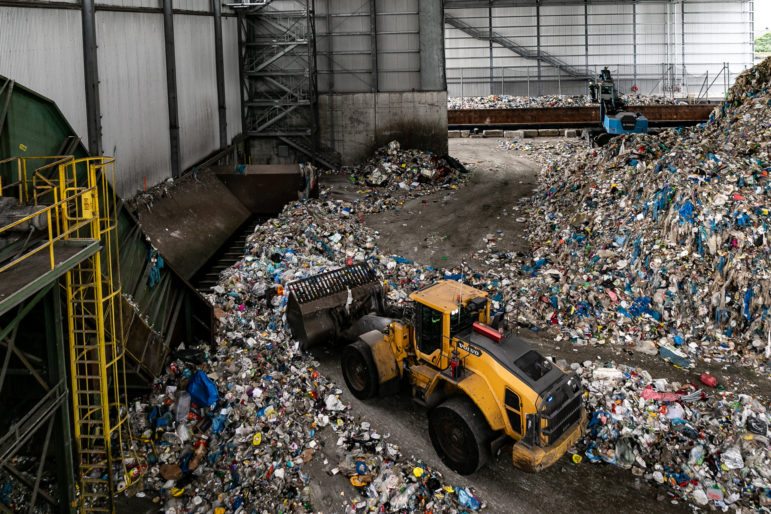The Role of Recycling Lives Services in Supporting Regional Areas
The Role of Recycling Lives Services in Supporting Regional Areas
Blog Article
Discovering Various Types of Waste in Modern Waste Monitoring Solution
The modern landscape of waste administration involves browsing a complex variety of waste kinds, each requiring specialized handling and disposal techniques to alleviate ecological impacts. Community strong waste, unsafe waste, digital waste, and organic waste each present distinct challenges and chances for resource healing.
Metropolitan Strong Waste
Municipal solid waste, usually referred to as household trash or trash, includes a range of thrown out products created by residential, industrial, and institutional resources within a district. This waste stream generally includes products such as product packaging, food scraps, yard trimmings, paper, plastics, textiles, and thrown out home goods. The administration of local strong waste is an essential component of urban preparation and public health and wellness, requiring effective collection, transportation, and disposal systems.
Efficient waste administration systems are created to lessen environmental influence while making best use of source healing. This typically includes a combination of approaches consisting of landfilling, composting, and recycling. Reusing programs target products like paper, glass, steels, and specific plastics, diverting them from garbage dumps and reintroducing them right into the manufacturing cycle. Composting natural waste, such as food scraps and yard trimmings, not just minimizes land fill use however also generates valuable dirt changes.
Communities should likewise address the economic and logistical challenges related to waste management. Applying pay-as-you-throw systems, enhancing public recognition, and purchasing technology can substantially boost waste diversion rates. By integrating these methods, districts can foster sustainable areas, reduce greenhouse gas emissions, and save all-natural sources.
Contaminated Materials

Efficient contaminated materials management includes a number of crucial steps: recognition, segregation, disposal, and treatment. Recognition requires the classification of waste based upon its harmful residential properties. Segregation makes sure that hazardous materials are kept independently from non-hazardous waste to avoid cross-contamination. Treatment approaches, such as chemical neutralization, incineration, and stablizing, are utilized to decrease the poisoning, quantity, or mobility of the waste. Ultimately, disposal alternatives, consisting of secure land fills and below ground storage space, are selected to ensure long-term containment.
Governing structures, such as the Resource Preservation and Recuperation Act (RCRA) in the USA, supply standards and standards for hazardous waste monitoring. Adherence to these guidelines, coupled with innovations in waste therapy innovations, is vital in reducing the dangers related to dangerous waste.
Digital Waste
Electronic waste, generally described as e-waste, represents a swiftly growing obstacle in waste management systems globally. This kind of waste encompasses thrown out digital gadgets and equipment such as smart devices, computers, tvs, and other digital home appliances. The fast speed of technological improvement, coupled with reducing item lifespans and consumer demand for the most recent tools, has tremendously enhanced the quantity of e-waste created yearly.
E-waste is specifically problematic due to its intricate make-up, typically containing unsafe substances like cadmium, mercury, and lead, check my reference which pose substantial ecological and wellness threats otherwise properly taken care of. On the other hand, e-waste likewise consists of beneficial materials such as silver, copper, and gold, which can be recouped and reused. The twin nature of e-waste-- both unsafe and useful-- demands specialized handling, reusing, and disposal procedures.
Reliable e-waste monitoring includes rigorous regulatory frameworks, durable collection systems, and progressed reusing modern technologies. Public awareness and engagement are critical, as inappropriate disposal practices, such as unlawful disposing and informal recycling, aggravate ecological contamination and wellness hazards. Enhancing e-waste management techniques is crucial for reducing ecological effect and recuperating beneficial resources in an increasingly digital world.

Organic Waste
Organic waste, consisting of cooking area scraps, lawn trimmings, and farming deposits, stands for a substantial portion of the global waste stream. This sort of waste is eco-friendly, implying it can be broken down by microorganisms into simpler organic substances. In spite of its potential for natural decay, inappropriate management of natural waste can lead to damaging environmental effects, including the emission of greenhouse gases such as methane, Read Full Article which add to environment modification.
Effective administration of organic waste is critical for reducing these ecological effects (recycling lives services). Composting is a commonly embraced method, transforming organic waste into nutrient-rich garden compost that can improve soil health and agricultural productivity. Furthermore, anaerobic digestion is an arising modern technology that converts organic waste into biogas, a renewable power resource, and digestate, which can be used as fertilizer
Municipalities and waste management entities have to our website apply robust organic waste collection and treatment programs to maximize the advantages of these processes. Public education and learning projects can additionally play an essential function in motivating homes and companies to separate natural waste from other kinds of waste. By focusing on the management of organic waste, societies can reduce landfill use, lower greenhouse gas discharges, and create useful byproducts for agricultural usage.

Innovative Waste Management
In the realm of waste management, ingenious techniques are changing just how societies handle their refuse, aiming for sustainability and efficiency. One prominent advancement is the execution of clever waste containers geared up with sensors that keep track of fill degrees and enhance collection courses.
Another notable growth is the adoption of waste-to-energy (WtE) technologies. By transforming non-recyclable waste into usable power with processes such as incineration and anaerobic digestion, WtE lowers land fill worry and supplies a sustainable energy resource. Innovations in chemical recycling permit for the malfunction of complex plastics right into their original monomers, making it possible for the creation of brand-new, premium plastic items.
Additionally, the round economic situation model is obtaining grip, highlighting the layout of products and systems that focus on reusability and source effectiveness. This all natural method urges industries to decrease waste generation from the outset. With these cutting-edge techniques, modern-day waste management systems are not only resolving the immediate difficulties of waste disposal however also leading the way for an extra lasting future.
Final Thought
A comprehensive understanding of municipal strong waste, contaminated materials, electronic waste, and organic waste, paired with the implementation of ingenious waste monitoring solutions, is vital for reducing ecological influences. Incorporating modern technologies such as smart waste bins and waste-to-energy systems can improve effectiveness and sustainability. Reliable waste monitoring approaches not just foster source recuperation but also promote public awareness and involvement, eventually adding to the growth of a round economic situation.
The modern landscape of waste monitoring includes browsing an intricate array of waste kinds, each calling for specialized handling and disposal approaches to minimize ecological influences. Metropolitan strong waste, hazardous waste, electronic waste, and organic waste each present distinct challenges and opportunities for resource recovery.Electronic waste, commonly referred to as e-waste, represents a rapidly growing difficulty in waste management systems worldwide. Via these innovative methods, modern waste management systems are not just attending to the prompt obstacles of waste disposal but likewise paving the way for an extra lasting future.
A detailed understanding of community solid waste, hazardous waste, electronic waste, and natural waste, combined with the application of ingenious waste administration options, is essential for alleviating ecological impacts. (recycling lives services)
Report this page